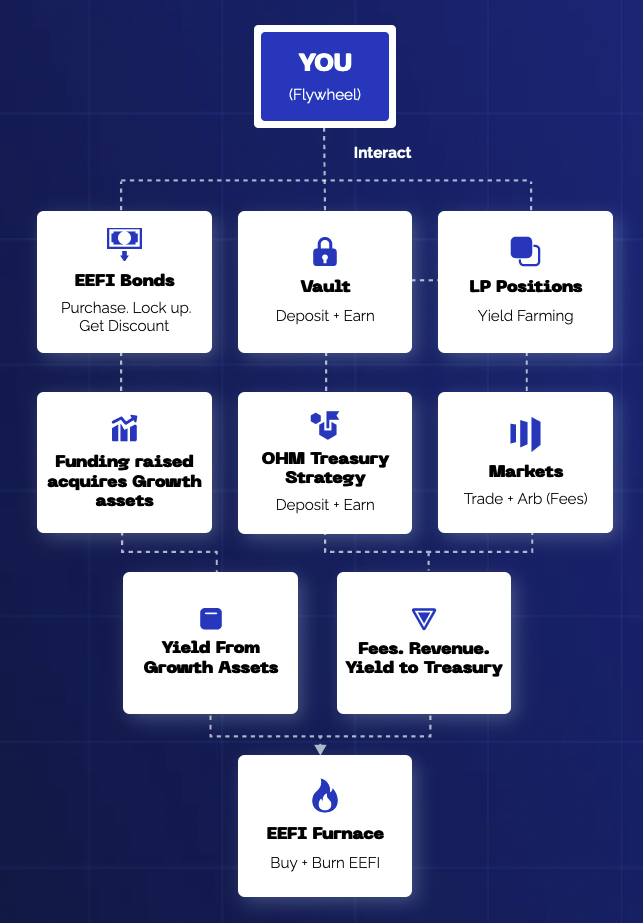About the Elastic Protocol

Participants in decentralized finance are seeking opportunities to earn sustainable yield —— regardless of market conditions.
The Elastic Protocol is designed to meet this market need. It enables anyone to participate in an ecosystem of unique yield strategies, collectively known as the Flywheel (see image below).
Elastic Protocol Flywheel

The Flywheel is designed to:
Maximize market uptrends: The Flywheel features classic rebasing tokens such as Ampleforth (AMPL), which can have a "force multiplier" effect on derivative or other tokens connected to these assets. For example, the protocol's core Elastic Vault utilizes a percentage of AMPL emitted during positive rebases to buy and burn the Elastic Vault's reward token, EEFI, which, depending on other market forces, could result in value accrual for EEFI. Holders and stakers can access enhanced EEFI yield without resorting to leverage and avoiding liquidation risks. Other components of the Flywheel feature yield-bearing growth assets that can be used to automatically buy and burn EEFI.
Minimize market downtrends: The Flywheel helps suport the protocol during market downtrends in several ways. For example, the Elastic Vault provides users with EEFI yield when Ampleforth is in neutral or negative rebase. Other parts of the Flywheel, including growth assets, subvaults and liquiidty pools, deliver continuous fee income to the protocol, which is used to buy and burn EEFI potentially supporting the token's value and utility.
Elastic Protocol Documentation Overview
This documentation, which will be regularly updated as new Elastic Protocol products and services are delivered, provides information about:
- Core system mechanics, including the Elastic Protocol Flywheel, which will support the EEFI yield token (and drive EEFI buying and burning)
- How we have partnered with Olympus DAO to integrate the flagship Elastic Protocol vault into the growing Olympus ecosystem
- Vault strategies for users, arbitrageurs and others
What Are Vault Strategies?
Vaults (such as those developed by Yearn Finance) are applications that help users earn yield on their crypto assets in a variety of ways. Their defining feature is automation. Users can earn yield via a simple deposit. They do not have to manually manage their position (e.g., make trades, compound interest, etc.).
Read Elastic Protocol 101 to learn how the Elastic Protocol operates and its many benefits.